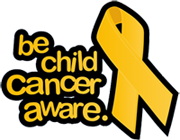Leukaemia, pharm the most common form of childhood cancer. It is a cancer of the blood that develops in the bone marrow and accounts for about 30 percent of cancer cases among children. Although Leukaemia can occur at any age, bronchi | it is most commonly diagnosed in children between 2 and 6 years old. The disease occurs more frequently in males than in females, and is more common among Caucasians than those of other races.
The two primary types of childhood Leukaemia are Acute lymphoblastic leukaemia (ALL) and Acute Myeloid leukaemia (AML). These two acute forms of leukaemia can develop over a short period of days to weeks. They are also treated differently in children and infants. An infantile strain is less common but is more aggressive, and requires more aggressive treatment. A third chronic form, called chronic myelogenous leukaemia (CML) is rare amongst children.
Like all blood cells, leukaemia cells travel throughout the body. Depending on the number of abnormal cells and where these cells collect, patients with leukaemia may have a number of symptoms, including:
* Anaemia
* Recurrent Infections
* Bone and Joint Pain
* Abdominal Pain
Leukaemia cells can collect in the kidney, liver and spleen, enlarging these organs.
* Loss of appetite and weight
* Swollen Lymph Nodes under the arms, in the groin, chest and neck
* Difficulty Breathing
Any difficulty with breathing requires immediate medical attention.
For further information about ALL Leukaemia please visit Macmillan Cancer Support
For further information about AML Leukaemia please visit Macmillan Cancer Support


